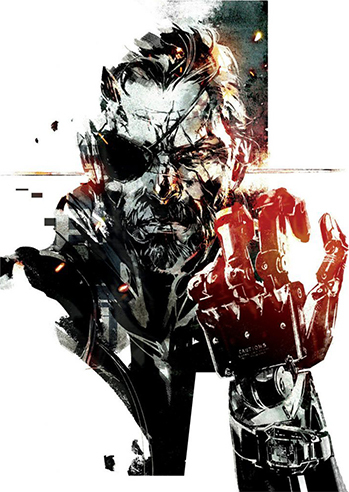Metal Gear Solid Psx Rip

Jul 23, 2012 - Hideo Kojima: Metal Gear Solid sold well throughout the world; it was. And I may get MGS4 again to gain all the trophies:) RIP MGO:( I hope. Konami would bring the MGS1 VR Missions as PSone Classics on PSN soon.
I worked on the port of MGS to PC back in 1999-2000. Here is what I've learned: - Models were not 'skinned' as it was popular in the day. Some textures were covering only the front part of the body, others arms, etc.
As such it was possible to use very little colors per texture (16) and use palettes (which is a very small 'texture' in the graphics memory). If models were skinned they would've required all the colors used anywhere on the body, and would produce other unpleasant effects (different sampling frequency, especially on the shoulders, etc.) Konami's character modeling is top-notch.
- Music/Sound - this was enignma for us. We were never given their internal sound mixer, but the popular metal gear tune was 'mod'-like with very short samples - all of this + game effects was fitting in a 512kb audio buffer (adpcm). - Game used overlays for the executable part. About 600kb were a main/shared/common part, and if I'm not mistaken 100kb or a bit more were swapped (the overlay).
The main part would declare entry-points to be reached, and the 'swapped' overlay were like many.so/.dylib/.dll files that knew about the main part. - TCL-like language was used to script the game, the radio, traps/objects in the game, etc. Each character would have a 'main' like function that accepted (int argc, const char argv[]) and handled the arguments from there (these were directly from the TCL scripts). Ah, the whole thing used 'C' only. - So 600kb+100kb, leaves you about 1.0mb for objects, 'scenerio' files to be loaded, etc. Since our port was more or less 'wrap' the PSX libs as PC, we didn't have to change too much, just on the surface - a bit like patching here and there. - The game used a tricky pointer hack, basically on the PSX accessing a pointer with the highest-24-bit set means read it from the CPU cache, otherwise not (or maybe the other way around).

This was used for example to indicate whether the C4 bomb was planted on the ground, or on the wall instead of keeping a booblean/bit flag for it. Possibly was used for some more things. Since it was 24-bit, that meant 16mb.
Manual de usuario software. To work on Windows we had to ensure that we don't go above the 16mb (and the exe starts from 4MB), we also had all overlays for the game compiled-in rather than doing the swapping as the game did, but we had plenty of space even then to fit. It's possible that we might've messed up some of the AI tweaks, but no one complained, and we were young and did not care. Then I had something to find all places where these pointers were used and mask them out when they had to be read, but kept the 24-bit highest bit in there (okay, it's a bit like tagging I've learned much later when I did some Common Lisp). - As we couldn't do shit about having the original mod-music working, we relied on couple of then popular MGS web-sites and 'stole' from them the whole music piece, and other things which came as an audio 'pre-rendered' form, and then played them directly from our game. So embarrased! - On my part I'm really proud that I was able to do a global-hack where I kept the fixed-point coordinates sub-pixel precision, so our PC port did not 'tremble' or 'shake' like others to come.
Basically on the PSX when you draw a triangle, the 'chip' makes all numbers integer pixels, and each vertex 'sticks' to a concrete pixel - this makes 'shimmering' like feature, and I was able to get around it. - The other team-mates were able to get software/hardware renderring (directx I think 3, or was it 5?). Konami used quite a lot of rendering trick that were not available back then. For example the camo-suit basically used the framebuffer as texture, from the location where the character was rendered - so it looked a bit like shimmering! - Two lessons learned from it - We've put much better high-res textures for the eyes (hired someone from Texas to do it for us), when we got the idea rejected by Hideo himself (by the phone), he told us (through the interpretter) that the game during normal game-play did not have any eye-movement, so higher-res textures would look like crap, while with a blurry texture your own eyes won't see it as a problem - it's really sometimes LESS is better. - Another was from my boss back then. We had to have a very strict frame-rate - I thnink 30fps otherwise some things were not properly emulated.